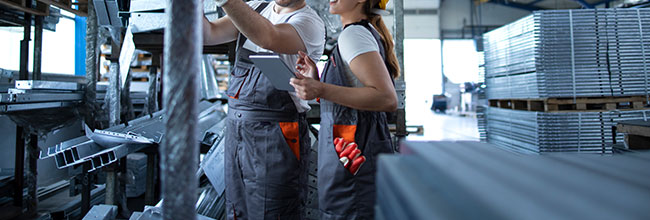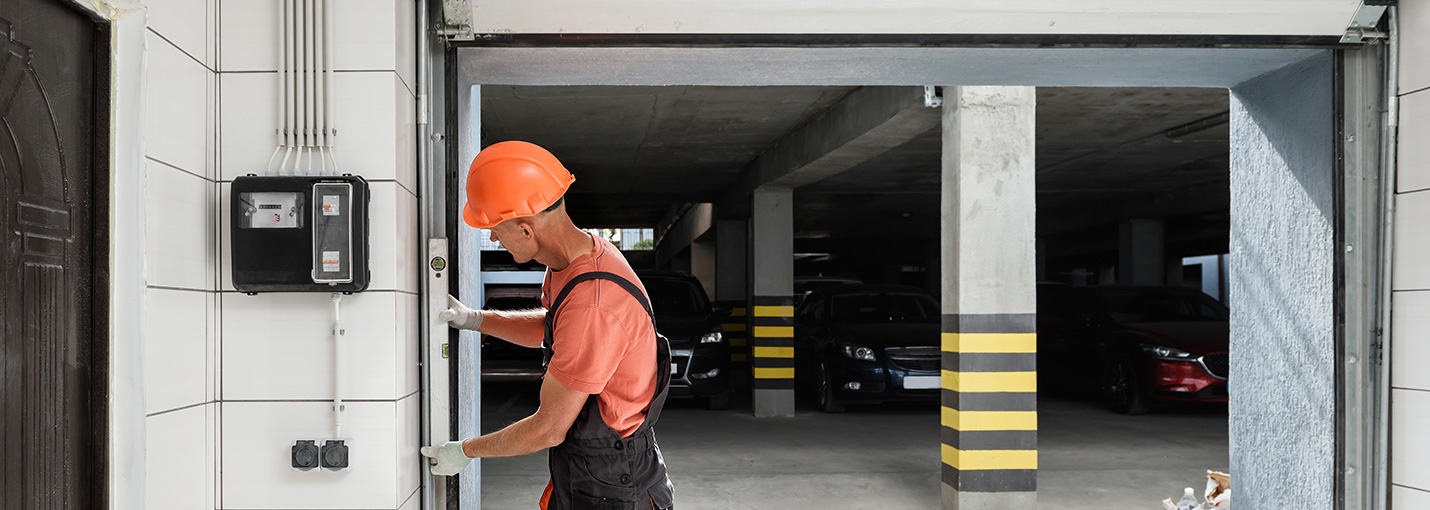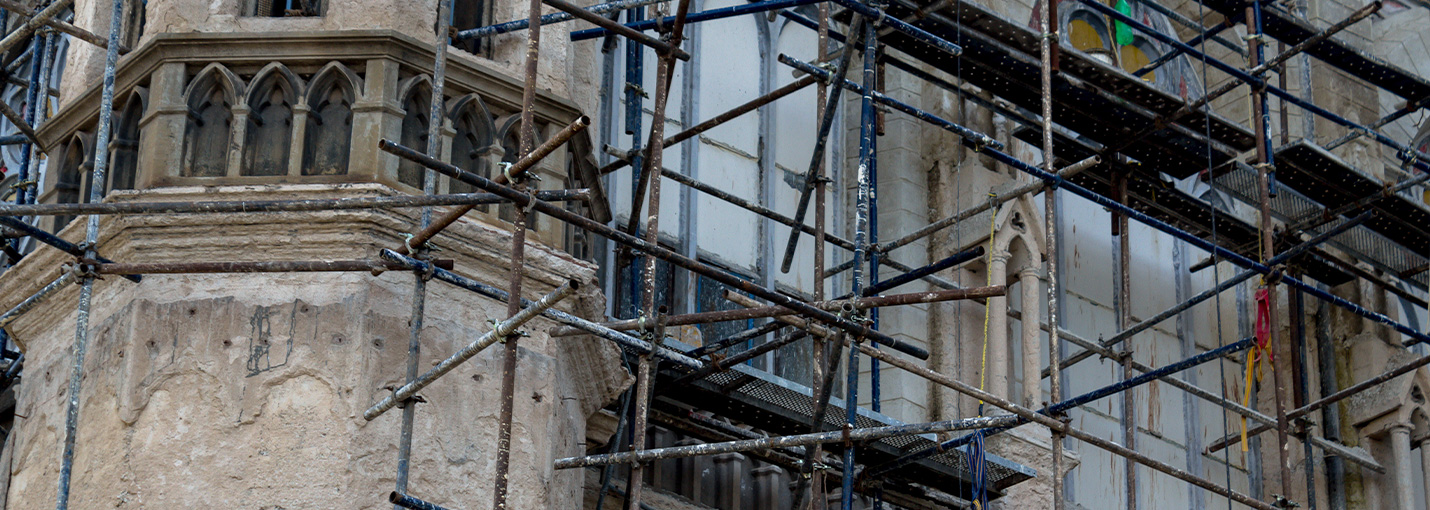The Unforeseen Dangers of Asbestos Exposure in Elevator Installation and Maintenance
When we consider the hazards that workers in various industries face daily, we often think about the immediate risks — a fall from a significant height, a burn from a hot surface, or an injury from a faulty machine. However, some dangers lurk unseen, posing a significant health risk over time.
Asbestos, a group of naturally occurring fibrous minerals, is one such hidden hazard. This blog delves into the risks associated with asbestos exposure, particularly for elevator installers, and emphasizes the need for rigorous safety measures.
!
Si cree que estuvo expuesto al asbesto, incluso cuando era niño, hable con un proveedor de atención médica sobre pruebas y exámenes para ayudar a diagnosticar cicatrices pulmonares y detectar enfermedades relacionadas con enfermedades relacionadas con el asbesto.
Comprender el asbesto
Asbestos has been a popular material in various industries due to its remarkable properties such as heat resistance, corrosion resistance, and excellent electrical and sound insulation. These features made it an ideal component in numerous applications, including construction materials like plaster, cement, vinyl, and tiles, as well as in insulators in electrical appliances and even textiles.
The risk, however, lies in its microscopic, odorless, and tasteless fibers, which, when inhaled or ingested, can embed into bodily tissues and cause damage over time, leading to serious health issues like asbestosis, lung cancer, and mesotelioma. Further, elevator construction workers are more likely to construct asbestos-related pleural disease.
El asbesto no tiene sabor ni olor.
Es posible que no sepa que lo está respirando.


What are the different types of asbestos?
Asbestos refers to six unique minerals that belong to two groups: Serpentine and Amphibole. These seis tipos de asbesto have been recognized for their industrial use:
- El cristolito: Also known as white asbestos, Chrysotile is the most commonly used form of asbestos and belongs to the Serpentine group. It has been used in roofs, ceilings, walls, and floors of homes and businesses.
- Amosita: Often referred to as brown asbestos, Amosite is a member of the Amphibole group. It has been commonly used in cement sheets, pipe insulation, and structural fireproofing.
- Crocidolita: Known as blue asbestos, Crocidolite is also an Amphibole. It’s considered the most dangerous form of asbestos due to its fine fibers that are easily inhaled. It was commonly used to insulate steam engines and in spray-on coatings.
- Tremolita: While not used commercially, Tremolite contamination can be found in Chrysotile asbestos, talcum powders, and vermiculite. It belongs to the Amphibole group.
- Antofilita: This is one of the rarest forms of asbestos and belongs to the Amphibole group. It was not often used in commercial products but could be found as a contaminant in composite flooring.
- Actinolita: Actinolite asbestos is dark in color, ranging from green to brown. It was not typically used in asbestos products, but it may be found as a contaminant. It belongs to the Amphibole group.
Each type of asbestos can be harmful when inhaled or ingested. As such, any suspected asbestos in buildings, especially in those built before the 1980s, should be dealt with by a professional abatement company to ensure safe removal and disposal.
Los riesgos para la salud de la exposición al asbesto pueden incluir:
| Mesotelioma: Cáncer del mesotelio, la capa delgada de tejido que rodea los órganos del cuerpo. Solo se sabe que este cáncer es causado por la exposición al asbesto. | Cáncer de pulmón |
| Cáncer de laringe: Cáncer de laringe (sección de la garganta llamada laringe) | Cáncer de ovarios |
| Cáncer de estómago | Cáncer de colón |
| Cáncer de faringe | La Asbestosis: una enfermedad pulmonar crónica asociada a la exposición al asbesto |
| Enfermedad Pulmonar Obstructiva Crónica (EPOC) | Atelectasia (collapsed lung) |
| Derrame pleural (acumulación de líquido alrededor de los pulmones) | Derrame pericárdico (acumulación de líquido alrededor del corazón) |
Elevator Installation and Maintenance Hazards
In the context of elevator installation and maintenance, asbestos exposure can be a real concern. Asbestos was widely used in older buildings for insulation, fireproofing, and soundproofing, areas that elevator installers could easily come into contact with during their work. Whether they are drilling into walls, removing old elevator components, or installing new equipment, they could unknowingly release and inhale these harmful fibers, setting the stage for long-term health risks.
While modern regulations have significantly curtailed the use of asbestos, the threat remains due to the sheer amount of pre-existing asbestos in older structures. Workers tasked with renovating, repairing, or demolishing these older buildings may become exposed to asbestos materials, and even asbestos removal itself often releases harmful fibers into the air. As such, construction industry standards, like those outlined in the Occupational Safety and Health Administration (OSHA) 29 CFR 1926, are imperative for safe operations.
“Todas las formas de asbesto son cancerígenas para los humanos”. 1
OSHA standards specifically address asbestos hazards and provide guidance for the construction industry. For example, 1926.1101 deals directly with asbestos and outlines mandatory safety practices, protective measures, and medical surveillance requirements. Additionally, OSHA provides comprehensive training and resources for construction workers, including elevator installers, to navigate the risks of asbestos exposure safely.
Complementing OSHA’s regulations, other organizations provide standards and practices to further safeguard against asbestos exposure. The Sociedad Estadounidense de Pruebas y Materiales (ASTM) outlines practices for visual inspection of asbestos abatement projects, comprehensive building asbestos surveys, and maintenance, renovation, and repair of installed asbestos cement products. Elevator installers can significantly benefit from these detailed, industry specific guidelines.
Asbestos causes six times more lung cancer than malignant mesothelioma.**About 38,000 people die each year of mesothelioma (cancer of the respiratory lining). (NIH) 2 3 |
Elevators aren’t going anywhere but up. Unfortunately, asbestos exposure from decades ago can cause health problems decades later.
Elevator installation and maintenance is still an ongoing and thriving job. You can check out some open positions, but be sure if you do take on this role to be cautious about the hazards of asbestos you may encounter. Areas like lift shafts and motor rooms can still be overlooked despite the modern safety precautions now in place.
Las personas que trabajaron en estas industrias antes de mediados de la década de 1980 tienen un mayor riesgo de desarrollar enfermedades relacionadas con el asbesto:
| Construcción | Fábricas | Fundiciones | Refinerías | Astilleros | Minería / Molienda |
| Demolición | Aislamiento | Trabajadores del acero | Instalación de tuberías | Construcción naval | Mecánicos |
  |   |   | |||
| Techumbre | Textiles | Trabajadores del hierro | Calderas | Extinción de incendios | Reparación de frenos |
| Piso | Cemento | Electricistas | Reparación de juntas | Ferrocarril | Climatización |
Desafortunadamente también lo hacen sus familias.
What are the dangers of asbestos in the workplace?
Asbestos in the workplace poses serious health hazards, as prolonged exposure can lead to deadly diseases like asbestosis, lung cancer, and mesothelioma. Inhalation of asbestos fibers can cause damage to the lungs and scar the lung tissue, often leading to chronic respiratory issues.
Industries involving older buildings and construction often involve asbestos exposure.
Especially at risk are workers in industries such as construction (44%), carpenters (17%), and painters (10%), where asbestos was widely used due to its heat and chemical resistance properties. U.S. Navy boats were also built with asbestos; as such, workers (especially those in confined spaces) should take precautions. Workers in these industries should always use personal protective equipment (PPE) to safeguard against these hazards.


The Hidden Dangers in Older Buildings
While we’ve discussed occupational exposure to asbestos, particularly for elevator installers, the danger isn’t confined to just the workplace. Many older buildings, including homes built during the 1920s and beyond, may still house this hazardous material. Exposure to asbestos is a risk faced not only by those employed in its removal but also homeowners and professionals renovating these aging structures.
Asbestos, valued for its heat-resistant and insulating properties, was a common component in 20th-century construction. It was used in various materials such as ceiling tiles, wall and attic insulation, furnace insulation, and vinyl floor tiles, to name a few.
When the Environmental Protection Agency (EPA) banned most asbestos products in 1989, many structures built before this time remained contaminated. A disturbing fact is that much of this asbestos was found to be “friable”—damaged or degraded and capable of crumbling into small particles, which can become airborne and present a significant health hazard.
“Algunas fibras de asbesto pueden pasar por alto... las defensas naturales de su cuerpo... y alojarse en lo profundo de sus pulmones. Esas fibras pueden permanecer en su lugar durante mucho tiempo y es posible que nunca se eliminen”.Fuente: Asociación Americana del Pulmón |
Demolition of older buildings can involve exposure to many asbestos materials, including in thermal insulation, electrical insulation, floors, roofing, adhesives, walls, cement, and many other places. Ductwork of all kinds, including elevator shafts, electrical panels, insulation, etc., could contain the mineral.


Casi todos los edificios construidos antes de mediados de la década de 1980 contenían productos y materiales de construcción de asbesto.


If you reside in a house built between the 1920s and 1970s, be cautious when planning renovations. Disturbing asbestos-containing materials can make them airborne and dangerous. If you suspect the presence of asbestos, it’s advisable to reach out to your local health authority and consider professional asbestos testing services.
Should I check my home or property for asbestos?
If your home or property was built before the 1980s, it’s wise to check for asbestos, especially before undertaking any renovation or demolition projects. Undisturbed asbestos generally doesn’t pose a risk, but once airborne due to disturbance, the fibers can be inhaled and cause serious health problems. Contact a licensed professional to safely inspect and test your property for asbestos-containing materials.
Does cement contain asbestos and where else is asbestos found in roofing?
Yes, roofing cement, particularly that used in properties built before the 1980s, puede contener asbesto due to its fire-resistant properties. Asbestos can also be found in roofing shingles, flashing, felts, and soffit boards. As such, during roof repairs or replacements, it’s crucial to use professionals who can safely handle these materials and prevent asbestos exposure.
Some forms of older cement, particularly those produced before the 1980s, may contain asbestos to increase durability and resistance to heat.
How do I remove asbestos ducting?
Asbestos removal is a high-risk job that should be done by trained professionals to ensure safety. Professionals follow strict regulations and use protective equipment to prevent asbestos fibers from becoming airborne during removal. If you suspect asbestos in your ducts, it’s essential to avoid disturbing it and promptly contact an asbestos abatement specialist to handle the removal.
Compartir una casa o un vehículo con alguien que usa ropa contaminada con asbesto lo pone en riesgo de contraer enfermedades relacionadas con el asbesto.34
Health Risks and Legal Repercussions of Asbestos Exposure
Asbestos exposure carries significant health risks, with the potential to develop severe diseases like mesotelioma, lung cancer, and asbestosis. Often, symptoms mimic those of other respiratory conditions, making diagnosis difficult. However, once diagnosed, various treatment options are available, including surgery, radiation therapy, and chemotherapy. Construction workers, particularly those dealing with older structures, are at an increased risk due to the prevalence of asbestos in these buildings.
Smokers exposed to asbesto are up to 50 times more likely to develop cáncer de pulmón than nonsmokers who aren’t exposed.5 |
The latency of asbestos diseases (symptoms can take 20-50 years to appear)
The tragic reality is that the asbestos fibers, once lodged in the body, can take up to 50 years to disappear. Many people get a “clean bill of health” upon retirement but develop an illness years or even decades later.
Several health studies have shown that the spouses of asbestos workers are at an elevated level of risk for asbestos illnesses like cáncer de pulmón.6 7 8 9
Even second-hand asbestos exposure is asbestos exposure.
Exposición al asbesto de segunda mano, such as those exposed to asbestos as children, may only now see symptoms. In fact, second-hand exposure accounts for 20% of asbestos illnesses around the world. Even minor or occasional second-hand exposure can be dangerous. Many legal options are open for those suffering from second-hand exposure.
Asbestos Bankruptcy Trusts (compensation for asbestos claims, without a lawsuit)
The asbestos industry’s history is marred with unethical practices that kept the dangers of asbestos concealed for decades. It was only en la década de 1970 when the devastating evidence about asbestos dangers became public. Ironclad proof showed that asbestos companies were aware of the deadly consequences of their products, yet they hid this knowledge to safeguard profits.
As a result of ongoing litigation, courts ordered asbestos companies to set aside billions in trust funds to compensate those affected by asbestos-related diseases.
¿Califica usted para una compensación?
Descubra rápida y fácilmente cómo estuvo expuesto buscando en WARD, la base de datos de asbesto más grande del planeta.
BÚSQUEDA GRATUITA >These trust funds, borne out of the industry’s past deceit, offer compensation for those diagnosed with asbestos-related illnesses. Many victims are eligible for settlements without the need to file a lawsuit, and legal consultation from asbestos attorneys can help navigate the process. Those with claims related to illnesses caused by exposure to asbestos will likely see the fastest results.
Un lawsuit is not always necessary, however, so be sure to speak with a competent legal representative to evaluate your options. The W.R. Grace Asbestos Trust, for example, can help workers exposed to asbestos from W.R. Grace products. This trust was designed to provide fair, equitable and substantially similar treatment for all PI Trust Claims that may presently exist or may arise in the future, according to its guidelines.
If you believe you’re showing symptoms of an asbestos-related illness, it’s crucial to reach out to a legal professional who can guide you to potential compensation resources. Whether the exposure occurred on the job, in the military, or even through indirect contact such as laundering clothes of a family member who worked with asbestos, there are legal avenues available.
Más de $ 30 mil millones todavía están disponibles (sin demandas. Sin tarifas a menos que reciba dinero. Sin riesgos). Haga su reclamo.   |
Safe Practices and Moving Forward
The key to minimizing asbestos exposure lies in education, awareness, and the proper use of safety measures. Construction workers, including elevator installers, must be adequately trained in identifying potential asbestos-containing materials, safe work practices, and the use of personal protective equipment. Furthermore, routine medical check-ups can help monitor workers’ health and detect any early signs of asbestos-related diseases.
“Por lo general, quienes desarrollan enfermedades relacionadas con el asbesto no muestran signos de enfermedad durante mucho tiempo después de la exposición”.Fuente: Instituto Nacional del Cáncer (NIH)10 |
Asbestos removal is ongoing. So are asbestos-related diseases.
In response to the health risks associated with asbestos, non-asbestos materials with similar properties have been developed to replace asbestos-containing materials (ACMs) in various applications. Over 60 countries have banned the use of asbestos, and manufacturers have adapted by using substances like non-organic fibers, synthetic rubber or plastic variants, and various types of minerals and fibers for gaskets and sealing products.
Asbestos cement and roofing products can be replaced with synthetic fibers, vegetable fibers, or cellulose fibers mixed with other substances. Asbestos storage tanks and pipes can be replaced with materials like cellulose, polyethylene, fiberglass, and certain types of pipes, while asbestos firefighting clothing has been replaced by high-tech or vacuum-deposited aluminized materials.
While there are many viable options now available, it’s necessary to still take precautions in older structures. Wearing protective gear and avoiding disturbing these fibers whenever possible is key.
AsbestosClaims.Law
En AsbestosClaims.Law, nuestra misión de asegurar una compensación para las víctimas del asbesto es más que profesional;es personal.
Nuestro fundador, Justinian C. Lane, conoce de primera mano los efectos devastadores del asbesto.
Tanto sus abuelos como su padre, todos trabajadores del asbesto, fallecieron de cánceres inducidos por el asbesto sin darse cuenta de su elegibilidad para juicios por asbesto u otras formas de compensación.
Nuestro objetivo es evitar tales trágicos descuidos informando y guiando a las víctimas y sus familias a través de sus opciones legales.
Si usted o sus seres queridos han sufrido como resultado de la exposición al asbesto, podría ser elegible para una compensación considerable. Estos fondos podrían cubrir tratamientos médicos, servicios de remoción de asbestos y salvaguardar su salud.
Además, los fideicomisos de asbesto ofrecen una compensación sin necesidad de un juicio, brindando un camino más rápido y sencillo hacia la justicia.
Comuníquese con nosotros en [email protected] o (206) 455-9190 para obtener ayuda con su reclamo. Ofrecemos escucha compasiva, explicaciones claras y no cobramos un centavo a menos que ganemos su caso.
Más allá de las demandas legales, también asesoramos sobre discapacidad de veteranos, seguridad social y protección laboral como compensación de trabajadores, FELA, y La ley de Jones para trabajadores marítimos.
No hay riesgo ni costo para conectarse con nuestro equipo experimentado sobre sus derechos. Nuestro compromiso con su bienestar significa que no cobramos honorarios a menos que reciba una compensación.
| Para más consultas o inquietudes sobre el asbesto, explore nuestro sitio web y página de YouTube, con infografías, videos y respuestas a preguntas comunes sobre temas relacionados con el asbesto. |
También presentamos WARD, la base de datos de investigación mundial sobre el asbesto. Es el recurso más completo de información relacionada con el asbesto.
WARD ayuda a identificar posibles escenarios de exposición, productos que contienen asbesto y puede indicar los tipos y posibles montos de compensación que puede tener derecho a recibir.
No te demores — ponerse en contacto Con nosotras hoy!
1 IARC Working Group on the Evaluation of Carcinogenic Risks to Humans. Arsenic, metals, fibres, and dusts. IARC Monographs on the Evaluation of Carcinogenic Risks to Humans. 2012 ;100(Pt C):11-465. PMID: 23189751.
2 The current understanding of asbestos-induced epigenetic changes associated with lung cancer. , Cheng, Y.Y., Rath, E.M., Linton, A., Yuen, M.L., Takahashi, K. and Lee, K., 2020. Lung Cancer: Targets and Therapy, pp.1-11.
3 The current understanding of asbestos-induced epigenetic changes associated with lung cancer. , Cheng, Y.Y., Rath, E.M., Linton, A., Yuen, M.L., Takahashi, K. and Lee, K., 2020. Lung Cancer: Targets and Therapy, pp.1-11.
4 Anua, S.M., Semple, S., Shakri, S.F.M., Safuan, S., Mazlan, N. and Asri, A.A.M., 2019. A review of the take-home exposure pathway of workplace hazards. International Journal of Medical Toxicology & Legal Medicine, 22(3and4), pp.13-19.
5 Klebe, S., Leigh, J., Henderson, D.W. and Nurminen, M., 2020. Asbesto, tabaquismo y cáncer de pulmón: una actualización. Revista internacional de investigación ambiental y salud pública, 17(1), p.258.
6 Ferrante, D., Bertolotti, M., Todesco, A., Mirabelli, D., Terracini, B. and Magnani, C., 2007. Cancer mortality and incidence of mesothelioma in a cohort of wives of asbestos workers in Casale Monferrato, Italy. Environmental Health Perspectives, 115(10), pp.1401-1405.
7 Miller, A., 2005. Mesothelioma in household members of asbestos‐exposed workers: 32 United States cases since 1990. American journal of industrial medicine, 47(5), pp.458-462.
8 Reid, A., Heyworth, J., De Klerk, N. and Musk, A.W., 2008. The mortality of women exposed environmentally and domestically to blue asbestos at Wittenoom, Western Australia. Occupational and environmental medicine, 65(11), pp.743-749.
9 İşten, B.H.S.T.O. and Maruziyetler, E.T., 2021. Exposures Moved from Work to Home as a Public Health Hazard.
10 National Cancer Institute (NIH), Hoja informativa sobre asbesto.




